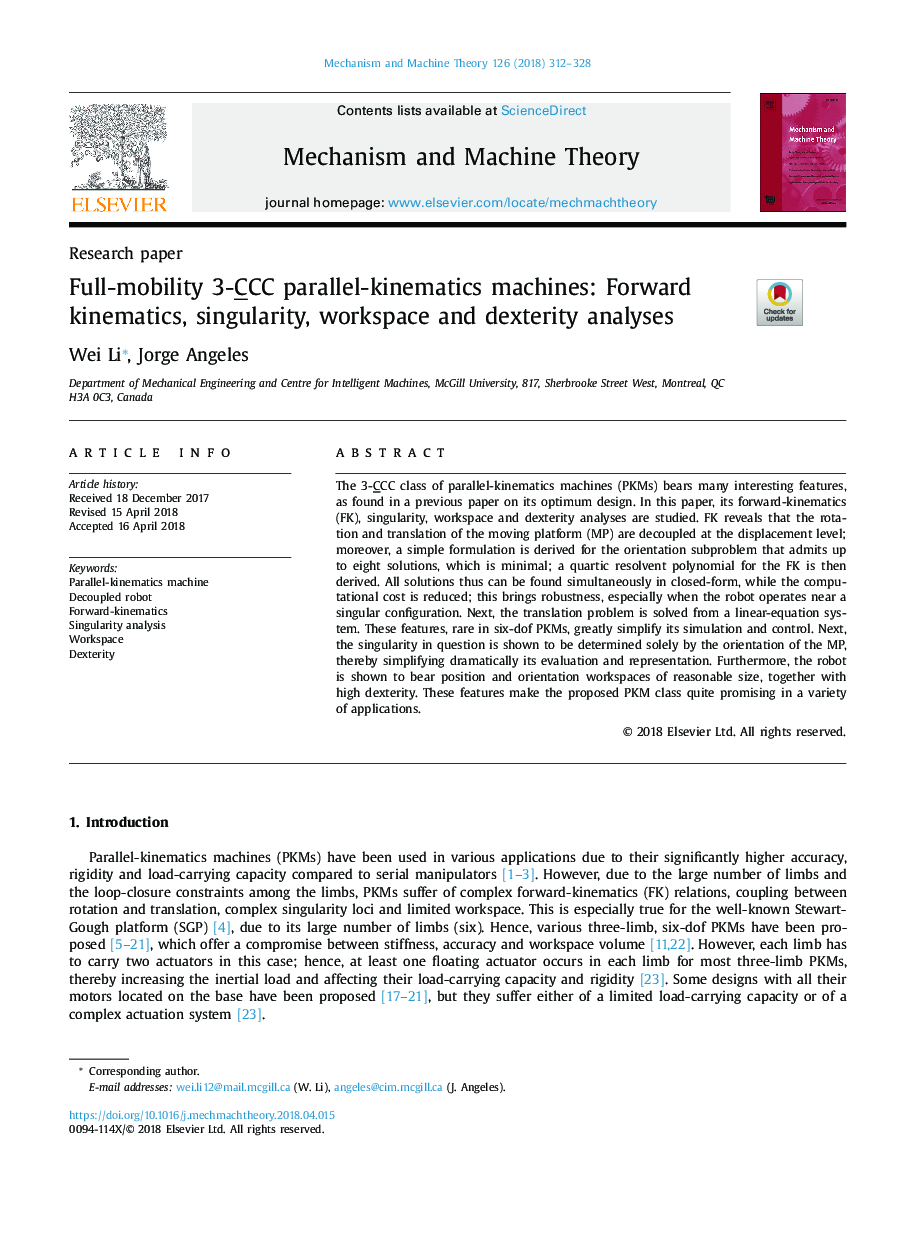| Article ID | Journal | Published Year | Pages | File Type |
|---|---|---|---|---|
| 7179082 | Mechanism and Machine Theory | 2018 | 17 Pages |
Abstract
The 3-CCC class of parallel-kinematics machines (PKMs) bears many interesting features, as found in a previous paper on its optimum design. In this paper, its forward-kinematics (FK), singularity, workspace and dexterity analyses are studied. FK reveals that the rotation and translation of the moving platform (MP) are decoupled at the displacement level; moreover, a simple formulation is derived for the orientation subproblem that admits up to eight solutions, which is minimal; a quartic resolvent polynomial for the FK is then derived. All solutions thus can be found simultaneously in closed-form, while the computational cost is reduced; this brings robustness, especially when the robot operates near a singular configuration. Next, the translation problem is solved from a linear-equation system. These features, rare in six-dof PKMs, greatly simplify its simulation and control. Next, the singularity in question is shown to be determined solely by the orientation of the MP, thereby simplifying dramatically its evaluation and representation. Furthermore, the robot is shown to bear position and orientation workspaces of reasonable size, together with high dexterity. These features make the proposed PKM class quite promising in a variety of applications.
Related Topics
Physical Sciences and Engineering
Engineering
Industrial and Manufacturing Engineering
Authors
Wei Li, Jorge Angeles,
